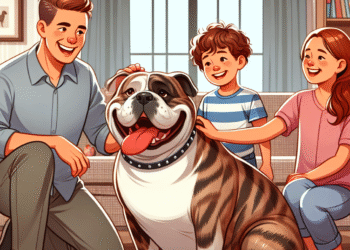Bully breeds have long been subject to stigma, largely driven by misconceptions and media portrayals that paint them as inherently aggressive or dangerous. As a result, these lovable and often misunderstood dogs frequently find themselves in shelters across the country. Understanding the myths surrounding bully breeds is crucial in addressing the underlying issues that lead to their abandonment. This article aims to unpack these myths and shed light on the real reasons bully breeds end up in shelters.
Myth 1: Bully Breeds Are Naturally Aggressive
One of the most pervasive myths about bully breeds, such as Pit Bulls, Bulldogs, and Rottweilers, is that they are naturally aggressive. However, aggression is not a breed-centric trait but rather a behavioral response often rooted in environment, socialization, and training.
The Truth
Research indicates that any dog’s temperament is influenced significantly by their upbringing, socialization experiences, and the owner’s training methods. Well-socialized bully breeds can be loving, loyal companions. Unfortunately, many end up in shelters due to previous owners who may have neglected training or socialization, leading to behavioral issues that are not inherent to the breed.
Myth 2: Bully Breeds Are Dangerous
The media portrayal of bully breeds often emphasizes sensational stories involving attacks, reinforcing the belief that they are inherently dangerous. In reality, the behavior of a dog is influenced more by individual circumstances than by breed generalizations.
The Truth
Studies show that the majority of dog bites are caused by unaltered male dogs of various breeds, and only a small percentage involves bully breeds. Responsible ownership, including proper training and socialization, is key to having a well-adjusted pet. By focusing on responsible pet ownership, communities can reduce incidents of aggression across all breeds, including bully breeds.
Myth 3: They Are Not Family Pets
Another myth is that bully breeds do not make good family pets. This misconception can prevent families from adopting these loving dogs, leading to further overpopulation in shelters.
The Truth
Bully breeds are known for their loyalty and affectionate nature, often forming strong bonds with their human families. Many families with bully breeds report positive experiences, highlighting their playful demeanor and protective instincts. Like any breed, proper training, supervision, and socialization are essential for a safe and loving environment.
Lack of Understanding and Education
One of the main reasons bully breeds end up in shelters is a lack of understanding about the breed itself. Many potential adopters are intimidated by the negative stereotypes and may not realize the true nature of these dogs. Conversely, some individuals adopt bully breeds without adequate preparation, leading to challenges that result in abandonment.
Addressing the Issue
Community education programs and awareness campaigns can be instrumental in changing perceptions. Engaging potential adopters through educational workshops, fostering programs, and showcasing the positive traits of bully breeds can encourage responsible adoptions.
The Role of Legislation
Another factor contributing to the high shelter population of bully breeds is breed-specific legislation (BSL). Some municipalities have enacted laws that ban or restrict ownership of specific breeds, which often leads to increased shelter intakes and euthanasia rates.
Advocacy for Change
Advocacy groups work tirelessly to overturn such laws, promoting breed-neutral policies that emphasize responsible ownership rather than targeting specific breeds. By shifting the focus from breed to responsible pet ownership, communities can create a safer environment for all dogs.
Conclusion
Bully breeds are often misrepresented, leading to their overpopulation in shelters. Debunking myths surrounding their behavior, danger, and suitability as family pets is crucial. By promoting education, encouraging responsible ownership, and advocating for fair legislation, we can give bully breeds a chance at the loving homes they deserve. Understanding these dogs for who they are—loving companions who seek understanding and care—can help reduce stigma and increase their chances of finding forever homes.














